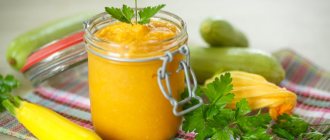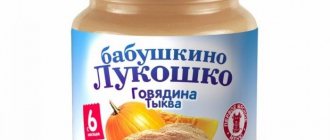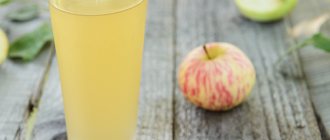Content:
1. The benefits of oatmeal 2. How to introduce oatmeal into complementary foods 3. When oatmeal is contraindicated 4. Dairy or dairy-free oatmeal 5. Homemade oatmeal 6. Ready-made porridge for baby food 7. What you need to know
Benefits of oatmeal
Oatmeal can be called a record holder for the content of nutrients. Its main value is its rich composition, which includes many essential microelements necessary for the growth and harmonious development of the baby. In addition, this cereal is high in fiber, which regulates intestinal motility and is especially useful for children who experience stool retention.
The enveloping properties of oatmeal also cannot be ignored. When there are disorders of the digestive system, oatmeal is often included in the diet precisely because of this quality. Enveloping the walls of the stomach and intestines, it creates a protective “film” that protects the mucous membranes of the gastrointestinal tract from irritation and accelerates their recovery. According to Anna Levadnaya, pediatrician, candidate of medical sciences, porridge in general is a source of slow carbohydrates that are digested gradually, which is why blood sugar levels rise slowly, and the child is provided with energy for a long time. Specifically, oatmeal provides the required amount of important elements. Thus, this is one of the main sources of B vitamins, which have a positive effect on the development of the nervous system, nail and hair growth, and skin condition. In addition, oatmeal contains rutin, iron, vitamins A, E and folic acid.
In a word, oatmeal is an important component of the children's menu, but it is important to correctly approach the introduction of this product into the diet.
How to introduce oatmeal into complementary foods
How many months should you start trying out new products? It is recommended to start any complementary foods from 6 months of age, and for a number of indications and as prescribed by a pediatrician - from 4 months. According to Sergei Nyankovsky, professor of pediatrics, founder of the University of Healthy Children, porridge should be made the second complementary food after vegetable or fruit puree.
At what age should your baby be introduced to oatmeal, your pediatrician will tell you based on data on weight gain, general health and other developmental characteristics. Some general recommendations include the following:
- It is better to introduce oatmeal after the baby has already become accustomed to rice and corn porridge. This is due to the fact that oats contain gluten, or gluten, a protein that can be poorly tolerated by children's bodies. To introduce oatmeal into your diet more smoothly, you can first add it to other gluten-free cereals, rather than serving it as a separate dish. Sergey Nyankovsky advises that when introducing porridge into complementary foods, you should start with a proportion of 5 grams of cereal per 100 milliliters of water. First, the baby is given one teaspoon of porridge, and over 7–10 days the amount of porridge is increased to the full feeding volume. If during this time there are no signs of a child’s health problems (skin rashes, unstable stools), the proportion can be increased to 10 grams of cereal per 100 milliliters of water. It is better to give porridge from a spoon and in the morning, as breakfast. After porridge, offer the baby breast or artificial formula.
- You need to carefully monitor the baby’s health and mood after the first feeding with oatmeal (as with any other product). If even minor signs of trouble are observed, you should remove oatmeal from your diet and consult a doctor.
When to start complementary feeding?
When to start introducing cereal is an important question that worries all parents. The answer to this depends on many factors, primarily on the type of feeding.
If the child is breastfed, it is not recommended to introduce complementary foods until 6 months. Artificial babies can prepare porridge after reaching 4-5 months.
Important!
But these recommendations are very general and should not be mandatory. The timing of introducing complementary foods largely depends on the general condition of the baby, the growth rate of the baby, and whether there is a threat of allergies or digestive problems.
Before introducing complementary foods, it is recommended to consult a pediatrician. After examining the child, he will tell you when to start preparing porridge and which one to start with.
When is oatmeal contraindicated?
Despite all the benefits of oatmeal, in some situations it should be completely excluded from the diet or abandoned for a while.
In the first case, we are talking about gluten intolerance. If a child has developed this condition, then any products containing gluten are contraindicated. On the recommendation of the pediatrician, such porridges are replaced with gluten-free ones (for example, rice, buckwheat or corn), which provide the necessary energy and nutritional value, but do not cause unwanted reactions from the immune system and digestive organs.
You should temporarily avoid oatmeal if you have frequent loose stools, since oats increase intestinal motility, which is undesirable in this condition.
Where to begin? Features of various cereals and the procedure for introducing complementary foods
Reviews from pediatricians and parents agree that one-ingredient gluten-free cereals that do not contain milk are optimal for a start, and complementary feeding should be introduced with them. This will reduce the load on the baby’s digestive system and minimize the risk of allergies.
Interesting!
The first porridges that a baby usually tries are rice and buckwheat. Moreover, if there is a problem with constipation, buckwheat is recommended, and for loose stools, rice is recommended. Buckwheat is generally the leader among cereals for first feeding. It is gluten-free and rich in fiber, protein and iron.
If the introduction to the first two cereals was successful, corn porridge is added to the child’s diet. Next you can give wheat cereal.
It is better to postpone introduction to oatmeal and millet until 10-11 months, and introduce semolina after a year, since it is quite difficult for the body and contains a minimum of useful substances.
Dairy or dairy-free oatmeal
If oatmeal is your first complementary food, you should choose a dairy-free option. This applies to all cereals and other complementary foods, since cow’s milk protein, which is part of the product, can cause an allergic reaction in some children due to the high load on the gastrointestinal tract, Levadnaya clarifies. And if a child develops unpleasant symptoms: bowel problems, rashes, etc., it is important to know which product his body reacted to. Therefore, pediatricians recommend only dairy-free cereals for first complementary foods.
But for complementary feeding in children who have already become accustomed to new dishes and who tolerate dairy products well, you can use milk porridges.
They are prepared using milk or, after preparation, they are diluted with breast milk, an adapted formula or special milk for baby food.
The important choice of the first porridge
Doctors recommend choosing gluten-free, non-dairy, multi-ingredient porridges.
The choice, in fact, is between buckwheat and rice porridge, because corn porridge is introduced into the diet later. Supplements cannot be used, but to dilute, take water or breast milk.
Another option for the liquid component is formula for children.
So, to summarize: the first porridges can be boiled or diluted. Take one type of cereal and do not use additives (including salt and sugar, which are familiar to an adult).
Homemade oatmeal
You can prepare oatmeal for your baby yourself. To do this you need to take 2 tsp. oatmeal and grind them in a blender or coffee grinder to flour. Then you need to bring 200 ml of purified water to a boil and, stirring, pour oatmeal into the water. Cook the porridge for 5–7 minutes.
You can add a little adapted milk formula or breast milk to the porridge that has cooled to 37–38 °C. The amount of formula and milk is adjusted depending on the baby’s age and his “experience” regarding complementary foods. So, if the child has not yet become accustomed to food with a denser consistency than formula or milk, the porridge should be diluted to a liquid state. And if the baby is already accustomed to semi-liquid complementary foods, the volume of liquid components should be reduced. It is important to remember the following rules:
- Porridge needs to be prepared for one time - it cannot be stored.
- Be sure to check the temperature of the cooked porridge, and only after you have thoroughly stirred it - it cools unevenly, and the top is always a little colder than the inside.
Ready-made porridge for baby food
Today, more and more parents prefer ready-made baby cereals. It's easy to explain.
- One of the key advantages of ready-made oatmeal for baby food is its quick preparation. This allows mom to save time and be confident in the freshness and high quality of the product.
- The composition of the porridge corresponds to the age of the child. Porridges for each age category differ in the concentration of vitamins, minerals and other biologically valuable additives. This allows you to provide your baby with exactly the substances he needs at this stage of his development.
- Rich assortment. Thanks to ready-made porridges, the children's menu can be made not only healthy, but also varied. Oatmeal with banana, peach, wild berries and other natural fillings, dairy and non-dairy products - this will help you choose a porridge taking into account your baby’s personal preferences and other characteristics.
What you need to know
When introducing oatmeal into complementary foods, several circumstances should be taken into account:
- Diluting porridge with water reduces the nutritional value of complementary foods and does not provide the child with all the necessary substances. Therefore, if for some reason you are forced to give up milk in your children's diet, consult your pediatrician.
- When breeding cereals for children with lactose intolerance or allergies to cow's milk protein, you can use special mixtures designed for children with such characteristics. They increase the nutritional and vitamin-mineral value of complementary foods, but do not cause undesirable reactions from the digestive system.
- When preparing oatmeal yourself, you need to pay special attention to the choice of ingredients and give preference only to high-quality oatmeal. And after cooking, the porridge should be further filtered to eliminate lumps.
Buy or cook?
On the question of whether you should prepare baby cereal yourself or buy it in a store, parents’ reviews vary. Thus, which of these is better, each parent decides for himself.
However, the World Health Organization strongly recommends starting complementary feeding with commercially produced cereals, as they have a number of advantages:
- additionally enriched with vitamins such as iron, calcium and iodine;
- do not require cooking;
- homogeneous consistency that does not harden when cooled;
- made from safe raw materials (do not contain salt, GMOs, dyes or other additives);
- easily absorbed by the child's body;
- undergo several stages of quality control.
Industrial porridges are prepared by enzymatic hydrolysis, which adds sweetness to them and does not require sweetening with sugar.
The disadvantages include the risk of allergies, especially if you purchase a product with added fruit. Therefore, to begin with, it is better to choose a product without additives, based on customer reviews and various ratings among popular manufacturers.










